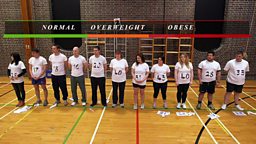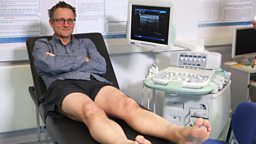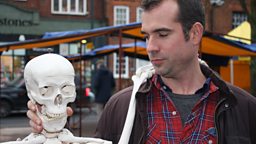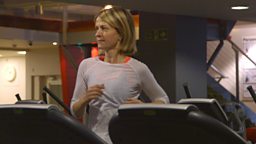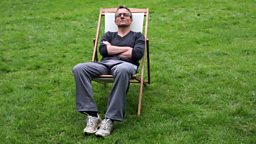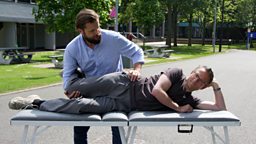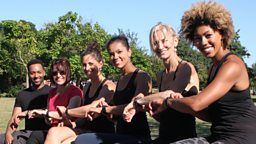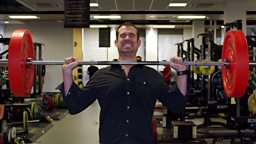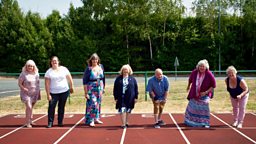Could having my muscles stretched have health benefits?
Could allowing yourself to be gently stretched by someone else, without making any effort of your own, give you some of the more important benefits of exercise?

It sounds unlikely, but early research in diabetics and those at risk of diabetes seems to suggest that being stretched by someone else might actually improve your health.
Trust Me, I’m a Doctor teamed up with Dr Ian Lahart at the University of Wolverhampton to put so-called ‘passive stretching’ to the test.
The experiment
We recruited 10 volunteers willing to give passive stretching a go. We asked them to come in twice, and on each day they came in having not eaten overnight, and drank a sugary drink whilst we monitored their blood sugar levels.
20 minutes after drinking the drink, they either sat still (‘baseline’, day 1) or they were gently stretched for approximately 20 minutes (‘passive stretching’, day 2).
During the stretching, they were carefully stretched 10 times, lasting 30 seconds for each stretch (6 lower body and 4 upper body stretches). Each 30 second stretch was repeated twice with 10-15 seconds in between each repetition and 15 seconds between each stretch.
Ian and his colleagues measured the participants’ blood sugar levels three times: once straight before the sitting or stretching (t= 0 min), once straight after the 20 minutes of sitting or stretching (t=20 min) and then, finally, 20 minutes after that (t=40 min).
Ian also measured the volunteers’ energy expenditure in calories straight after the stretch, along with their heart rate.
Blood sugar level results
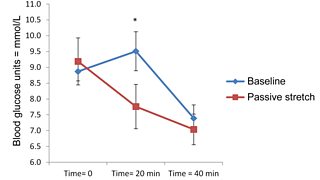
When our volunteers weren’t being stretched, a sugary drink raised their blood sugar levels as you’d expect. But when their muscles were gently stretched after having the same drink, their blood sugar levels actually FELL and by 16% (making them 23% lower than the peak their blood sugar reached when they just sat still). It was a very surprising result.
Heart rate results
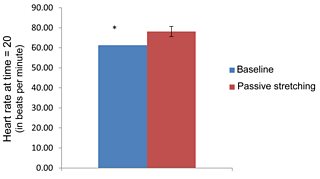
Our volunteers’ heart rates were on average 17% higher with stretching compared to when they just sat still, going from an average of 67 beats per minute to an average of 78 beats per minute. This increase is in line with what you would expect during low (mild) intensity aerobic exercise, as the effort required was similar to taking a stroll. The heart rate reflects the effort expended.
Energy expenditure results
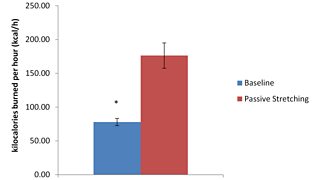
Our volunteers burned 126% more calories per hour as they were being stretched compared to when they were just sitting still. That’s nearly 100 (98.3) calories extra per hour without doing any exercise themselves!
Now what if you were to stretch yourself rather than being passively stretched? Ian would expect to see a bigger effect, because you’re manoeuvring yourself into those stretching positions and you’re applying more tension in the muscles.
So, people who are disabled, very elderly or unable to do much physical exercise could really benefit from some careful stretching of their muscles by a suitably qualified person. And if you are able to stretch yourself – maybe try it whilst you’re watching TV to help burn those calories and bring your blood sugar levels down.
